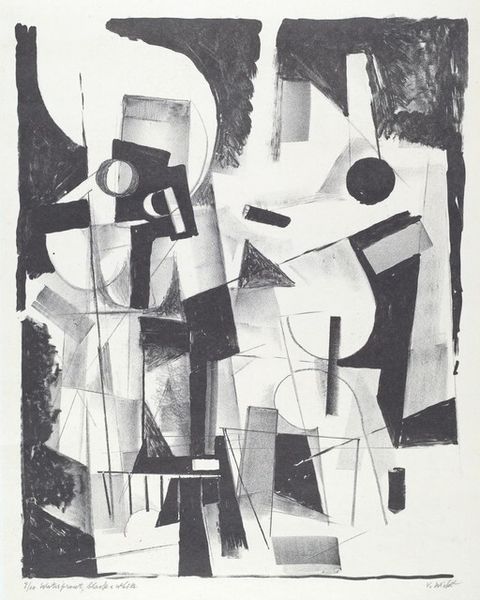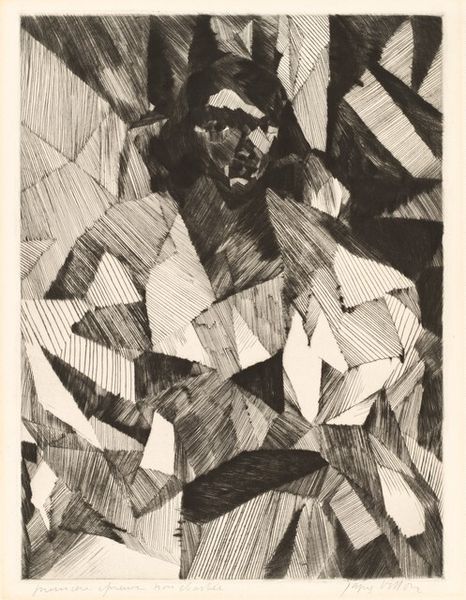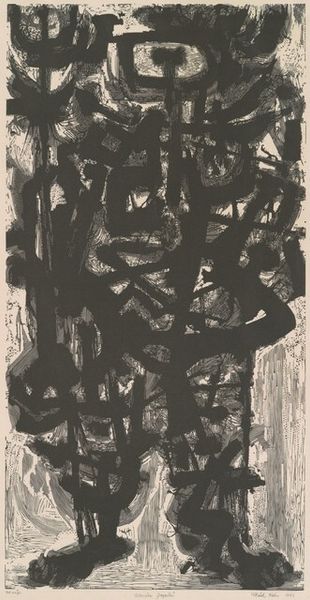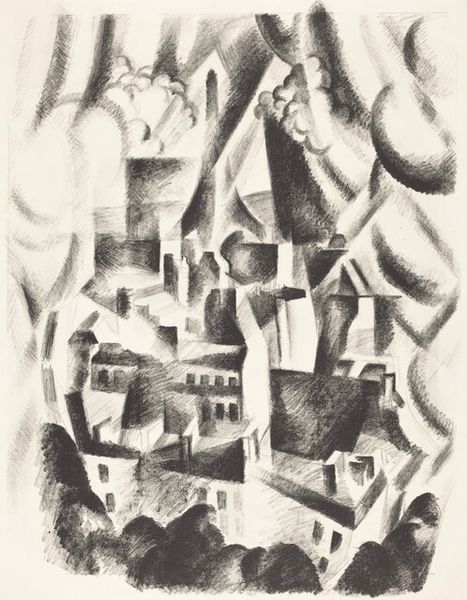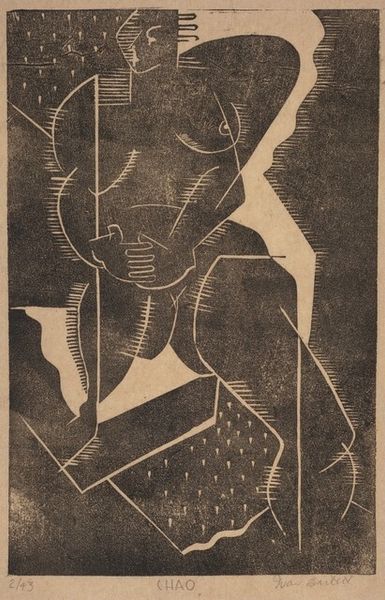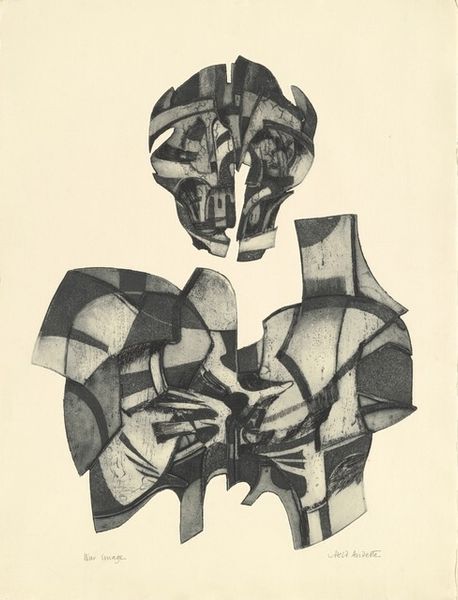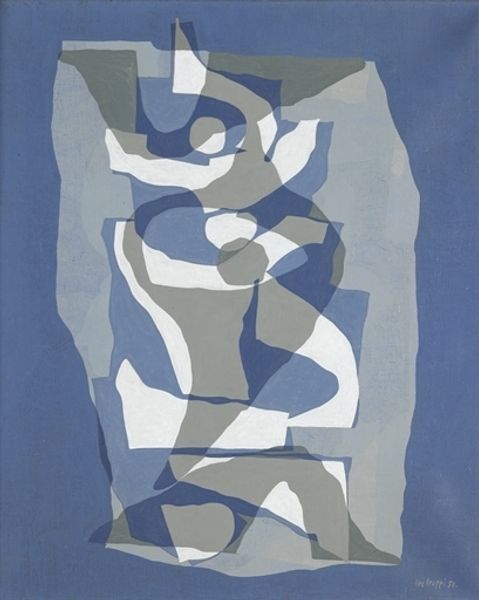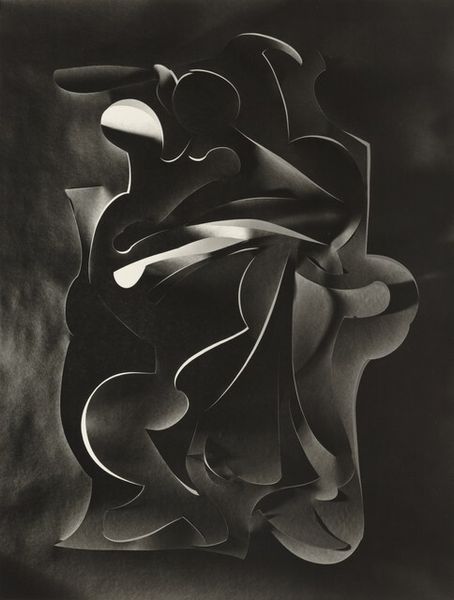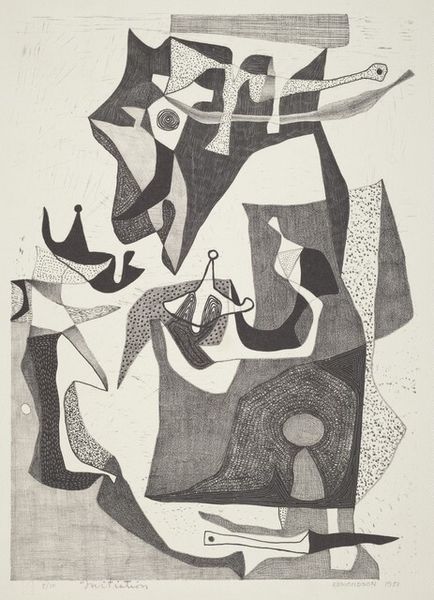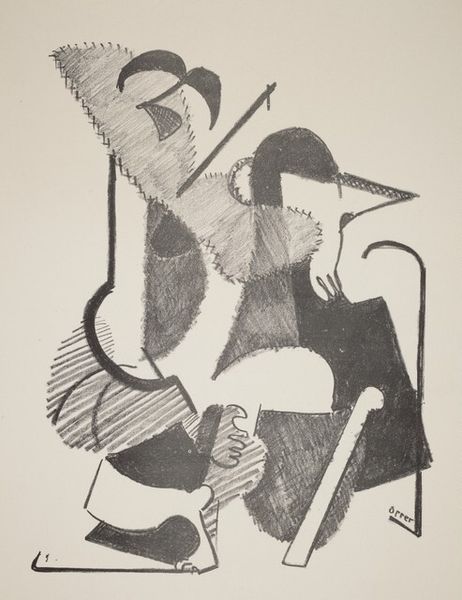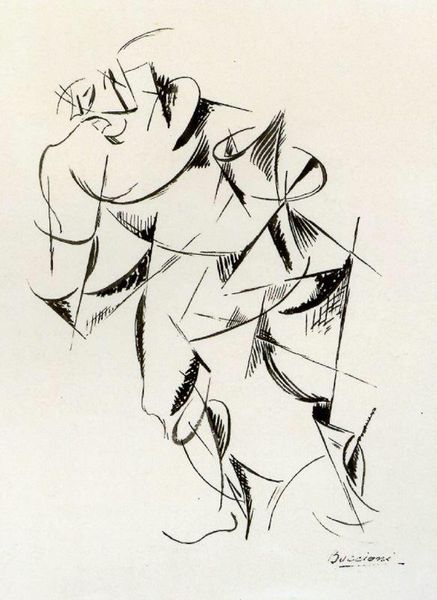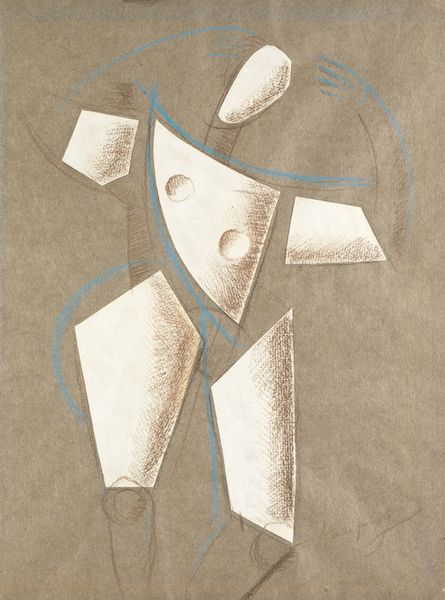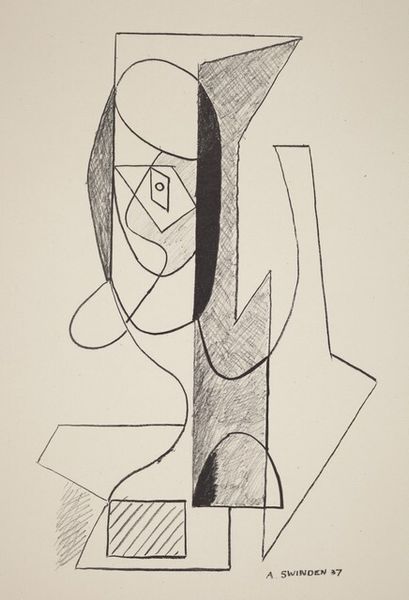
drawing, print, graphite
#
portrait
#
drawing
#
cubism
# print
#
graphite
#
portrait drawing
Copyright: National Gallery of Art: CC0 1.0
Curator: "Promenade" by Frederick O'Hara, is a striking graphite print rendering a group portrait. The work adopts a bold cubist style, fragmenting and reassembling forms, though its precise date is not known. What is your initial reaction to this work? Editor: Well, it immediately strikes me as visually dense. The interlocking planes create a certain dynamism, yet the grayscale palette subdues the energy somewhat, evoking a sense of restrained power. The lines define a clear but puzzling structure... What are the dynamics going on in this piece from a broader context? Curator: It's interesting you mention "restrained power." Given the work's seeming lack of a definitive historical grounding, it's interesting to look at Cubism's complicated role in colonial depictions. Oftentimes this style was co-opted to present distorted perspectives that were weaponized in other ways; this wasn't its intent, per se, but must be interrogated. Does it reinforce power dynamics, or does the deconstruction offer some sense of equity among these figures? Editor: I see your point. On one level, Cubism certainly aimed to dismantle traditional representational forms, disrupting the illusion of a singular, fixed viewpoint. It can become something different, more progressive. However, the arrangement of light and shadow creates focal points, hierarchical contrasts of who and what we, as the audience, pay attention to. It feels like O'Hara is working with the language of form. The interplay of angles and tonal variation feels like a conversation within itself. Curator: This visual vocabulary, the angular abstraction of the figures, invites critical examination beyond a purely formal exercise. The composition creates questions about narrative perspective in ways that were not common or welcome when this approach was first unveiled. O'Hara seems keen on complicating perception itself; these figures' position, even their gaze, are actively competing for power within the plane. Editor: In that case, would you suggest a kind of representational tug-of-war—a battle for pictorial and representational dominance? It is easy to find visual contrasts that guide viewers to consider one position over the others. I have become more interested in the arrangement overall. Thanks. Curator: Indeed. Art can act as a lens for examining how social forces shape our understanding and experience of the world. I appreciated your close looking that prompted this shift in focus for both of us.
Comments
No comments
Be the first to comment and join the conversation on the ultimate creative platform.
